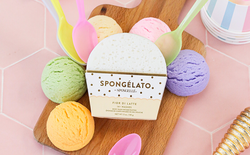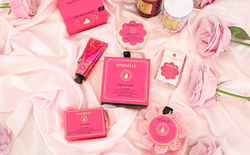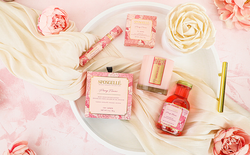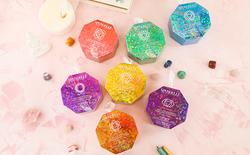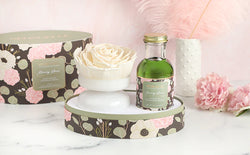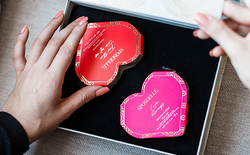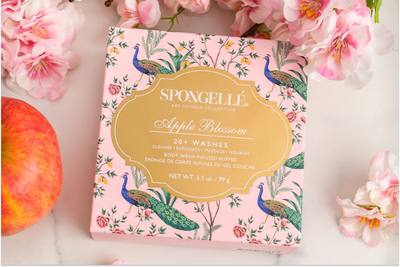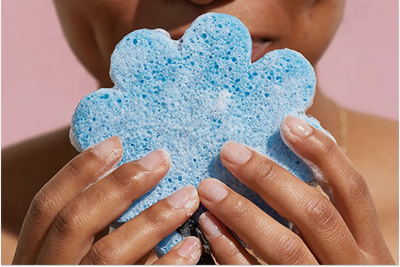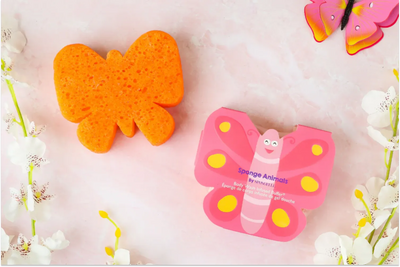We all remember our first exfoliator purchase, those little plastic tubs from the body store full of pink or purple, beautifully scented oily salts for softening your hands or feet.
We also remember them eventually blending into the plethora of products lining the bathtub and thinking of them again after the product’s oils have already gone bad.
That’s why finding an exfoliation routine that is right for your lifestyle and your skin is the only way to healthier, brighter skin.
So, What is Exfoliation?
Exfoliation is the process of massaging the body with a body scrub, a body scrubbing tool or using a chemical treatment to remove dead skin and build up and ultimately refresh your skin.
But this process only works with commitment and repetition —this is not to say that the occasional exfoliation treatment isn’t healthful for your skin and complexion. But it is to say that the best results are found when a plan and routine is put into place.
So how can you know where to start? What are the different types of exfoliants? What should you use to exfoliate? And how often should you exfoliate?
In this post, we will right jump in and answer these questions so you can feel confident in putting together the exfoliation routine of your dreams.
What Does Exfoliation Do for Your Skin?
Exfoliation actually helps remove dead skin cells so your body can continue to make healthy new skin cells. Our skin cells regenerate every 28 to 30 days, and during that process, the old cells are pushed to the surface.
Most of these cells can find their way off of the body, but depending on our individual skin issues, skin types, and how often we treat our skin, and with what effects how much of these dead cells stick around clogging our pores, creating rough skin, or even ingrown hairs.
A simple exfoliation routine can change all of this. Exfoliation clears away dead skin and impurities sitting on the surface, it penetrates rough spots and gets them ready to be lusciously hydrated by a moisturizer.
It can even reduce the appearance of redness and a blotchy complexion. Exfoliation clears away unnecessary old skin to make room for the healthy, happy, shiny new skin we have just waiting to glow!
How Often Should You Exfoliate?
A quality exfoliation routine takes time. If you want gorgeous, smooth skin, you will have to commit to the routine. So how often should you exfoliate?
Your exfoliation routine depends greatly on two main factors: your skin type and the types of exfoliators you use. Your personal time also plays a massive part in what type of routine you can fit into your busy life.
You need your exfoliation routine to work for you, and it should be relaxing and fun in the process.
So we mentioned skin type. Skin type plays a huge role in how often your skin can handle an exfoliant treatment.
There are four main skin types with some combinations between each mixed in:
- Sensitive Skin
- Normal Skin
- Oily Skin
- Dry
- Combination
Sensitive Skin - If you have sensitive skin, you should exfoliate less. Exfoliation is a skin treatment, and if our skin is over exfoliated, it will have the reverse effects. Be gentle with your sensitive skin and only exfoliate once or twice a month. If your skin responds well to these two treatments, you can slowly add a once-a-week exfoliation routine.
Normal Skin - Normal skin is some pretty tough stuff. We always suggest starting slow with a new routine and only exfoliating once per week to start. Once you, and your skin, get the hang of the new habit, you can easily up your exfoliation game by two to three times a week to help keep ingrown hairs and rough skin at bay.
Oily Skin - Like normal skin, oily skin is tough, but the excess oil can make it prone to more build up and blemishes. Setting an exfoliation schedule of three to four times a week can help clear up skin issues and leave your skin baby soft.
The one critical step that people often skip thinking it will make their skin oilier is moisturizing. This is not actually the case. Studies have shown that a regular moisturization routine, even on the days you aren’t exfoliating, will actually help regulate your natural oil production by keeping your skin hydrated and balanced.
Dry Skin - There are a few telltale signs when it comes to dry skin. People with dry skin tend to have more redness, more inflammation spots, and it can feel less elastic.
Dry skin should be treated similarly to sensitive skin, and dry skin definitely does not mean you need to scrub your little heart out to get to soft, supple skin. The opposite is true, actually. With dry skin, you need to slowly introduce exfoliation into what you are already doing to combat your dry skin.
And absolutely, always and forever follow up exfoliation with a deep moisturizing treatment so that all that good work you did from exfoliating can hang around in the form of happy moisturized skin.
Combination Skin - Combination skin is exactly what it sounds like. You can have almost all different types of skin on different parts of your body. Being aware of the skin areas that may be drier or oilier, and knowing how to navigate caring for each type, will bring you the most success with your exfoliation routine.
We wouldn’t treat our face the same way we treat our feet, and in that same message, we should not treat our dry areas the same as our oily areas.
What Are the Best Tools For Exfoliation?
The ultimate best tool for exfoliation is actually the process of exfoliating itself. Exfoliation is not a one and done treatment.
The best exfoliation results are seen after several weeks of keeping up a regular routine of exfoliating, followed by moisturizing.
This seems daunting, we know. However, there are lots of tools on the market you can use to help simplify this process and make exfoliation a breeze.
A body wash infused exfoliator tool is going to be your best friend. With an all-in-one tool, you don’t have to worry if you are using the right amount of product or the right amount of pressure. You also won’t have to deal with your skin feeling oily or greasy after like most body scrubs leave you feeling.
A body buffer designed for regular use will be gentler, simpler, and faster. You won’t even have to think twice about a month’s worth of treatments. Buffer sponges are durable, versatile, and dependable. And when the body wash runs out, you know it is time to replace it and don’t have to worry whether it has gone bad.
There are even contouring gloves you just slide your hand into and get to work sudsing up and massaging your whole body.
Over Exfoliation Can Be Harmful
Although there seems to be no one set rule on how exactly to and when to exfoliate, exfoliating every day is simply something you should never do.
No matter which skin type you have, over-exfoliation can cause irreparable damage to your skin. When we over-exfoliate, we risk removing more than the top layer of dead skin. We could be damaging our fresh new skin and removing the natural oils our skin makes that help protect and heal our skin.
This layer of oil helps essentially keep us waterproof. It helps keep toxins out and is our base-line of defense against harmful UV rays and pollutants. It also naturally moisturizes, keeping our skin and hair healthy.
Over-exfoliation can also cause microscopic tears in the skin that compromise what our skin is there to do, protect us from outside elements, and be able to handle the jobs and activities we use our bodies for.
Over exfoliation also causes extreme dryness. These microscopic tears allow moisture to escape. Skin can become red and rough, replacing luscious healthy skin with the dry, itchy, patchy skin we wanted to avoid.
How to Avoid Over Exfoliation
Always be gentle. Scrubbing harder does not improve your results. In fact, it is very damaging to your skin. Starting slow and using gentle circular movements while checking in to see how your skin responds to this treatment is the key to avoiding over-exfoliation.
Your body needs time to warm up to the new treatment and get used to being moisturized and happy too.
If you have doubts about how much exfoliation your skin can handle, try your first treatment and then wait a week between your next to see how your skin responds. No increased redness and dry spots? Then it is safe to continue the following week.
If you are still unsure, schedule an appointment with a dermatologist to discuss how often would be right for you and your skin type.
You don’t have to be intimidated by a new routine. Exfoliation can be fun, relaxing, and invigorating. You just have to invest the time, in the beginning, to find out what works best for our skin and be willing to put in the time to make gorgeous, glowing skin happen!
Start upping your skincare routine today with one of our body wash infused buffers. And, as an added bonus, use code BLOG20 for 20% off your first order!
Sources:
https://www.byrdie.com/how-often-should-i-exfoliate-my-face
https://www.verywellhealth.com/do-i-need-a-moisturizer-if-i-have-oily-skin-15595
https://www.bustle.com/articles/150188-should-you-use-moisturizer-with-oily-skin-thats-acne-prone-heres-what-an-expert-has-to-say
https://www.glamourmagazine.co.uk/gallery/dangers-of-over-exfoliating-face-skin

